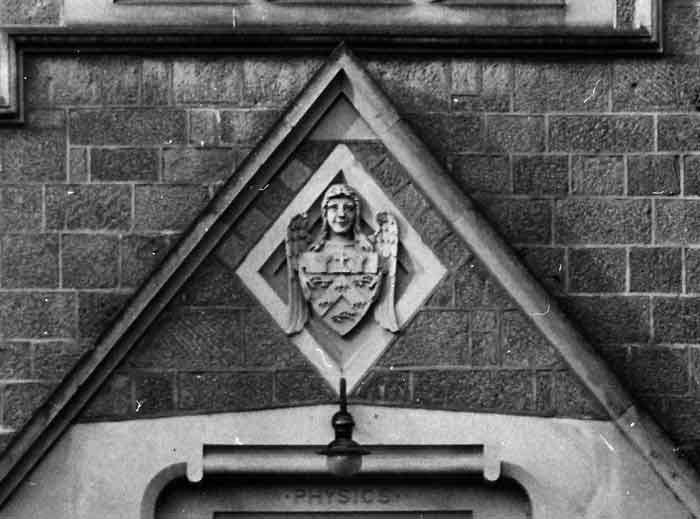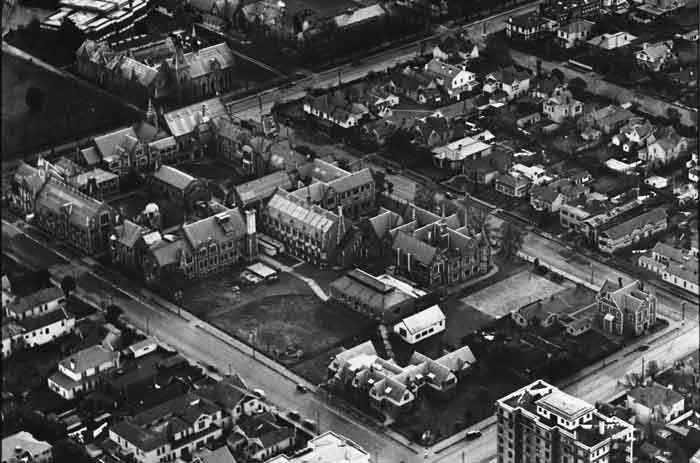It was auspicious for Canterbury that by the time Canterbury College was officially founded in 1873, the Province was about to experience an economic boom as the value of wool exports rose dramatically. The increase in the region’s income was matched by an expansion of its social and educational infrastructure. In the 1870s alone the city was to open the Normal School, Christchurch Girls and Boys High Schools, the Public Library, the Council swimming pool on the Avon, a new railway station, and the Post Office in Cathedral Square. The Council was particularly proud to have New Zealand’s first telephones in operation by 1879.

Therefore may your fields prosper

Canterbury College Coat of Arms, on the Physics Laboratory, c.1917. The symbols on the Coat of Arms, such as the ploughs and fleeces, reflect the College's foundation on agricultural land leases.
The combination of the appropriate finances along with political willpower allowed the Canterbury Collegiate Union, formed in 1871, to evolve into Canterbury College. The College formally came into being when the Provincial Council passed the Canterbury College Ordinance on 16 June 1873. The College was to be financially supported by leases from land reserves set aside specifically for this purpose, as had been outlined in the Canterbury Association's plans. Being built upon the wealth of the land explains why the College adopted the Latin motto "Ergo tua rura manebunt", meaning "therefore may your fields prosper".

An aerial view of Canterbury College, c.1930. Institutions for which the College Board was responsible included the Boys' and Girls' High Schools and the Museum, all of which are visible in this image.
It is interesting to note that in 1873 Canterbury College was viewed as an organization with a wide variety of responsibilities, not just management of the College. The Board of Governors were also responsible at various times for the oversight of the Museum, the Public Library, the Boys' High School, the Girls' High School, the School of Agriculture, and the School of Art. The College would face many challenges as a result of the diverse needs of these groups, not the least of which was the provision of appropriate buildings and facilities for each.